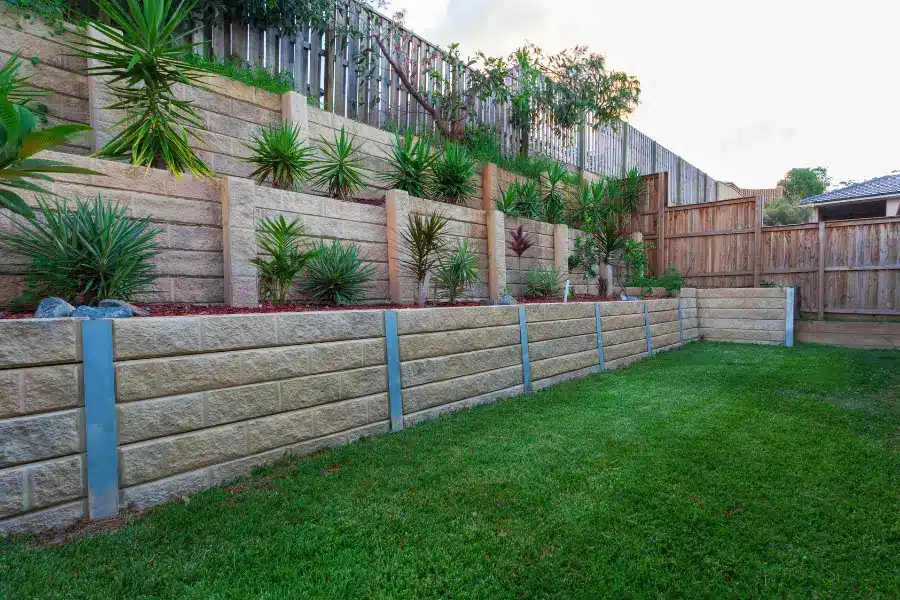You have probably seen retaining walls many times in your life, and you do not realize it most of the time. Most people do not know what retaining walls are.
Do not fret. You have dragged yourself to the right place. This blog is all about retaining walls. Here, you will learn a retaining wall’s purpose, types, and costs.
What is a Retaining Wall?
A retaining wall is a building that keeps earth or soil behind it in place. Retaining walls can be built from a variety of materials, including concrete blocks, poured concrete, treated wood, rocks, and boulders.
This type of wall is widely used in a variety of engineering applications, including road, train line, overpass, and irrigation engineering, as well as coastal engineering and land reclamation.
A retaining wall structure could be employed to preserve the bottom surfaces on either side of it that are at very different elevations.
Essentially, retaining walls retain soil and earth in shape. Otherwise, the soil might erode. Vertical soil slopes are supported laterally by retaining walls. They prevent the soil from taking another shape that it might otherwise.
The Purpose of Retaining Walls
Aside from the fact that it holds the soil in place, retaining walls have other purposes.
Allows for steep areas to be used
A retaining wall can make an area flat and level out a slope. After all, a flat surface is virtually always more advantageous than a steep incline.
Retaining walls enable the development of structures like car parks, athletic fields, or buildings that would otherwise not be possible on such a property.
Built to have a better drainage system
When it comes to controlling water on a property, retaining walls can be very helpful. Most of the time, retaining walls are employed to fix slope problems close to bodies of water.
You should be informed that there are numerous local and state rules and regulations that must be preceded if you are thinking about building one for this purpose.
Before constructing a retaining wall, it is a good idea to know and obtain the permitting requirements. If you do not have time for this, you can always leave the building to contractors for retaining walls Charleston, SC residents trust.
Prevents soil erosion
As mentioned above, the primary reason for constructing retaining walls is to keep earth or soil in place, therefore preventing it from eroding. The soil and the area around it could easily experience erosion if the soil tilts downward.
Water can also be kept back by retaining walls. In the absence of a wall for this purpose, the shoreline may be vulnerable to erosion, which could cause the sea line to move.
It makes a very aesthetically-pleasing facade
The installation of these landscaping walls in homes is also done for aesthetic reasons. A building’s landscaping feature can have features added to it.
Any building can look more pleasing overall by using gorgeous stone and decorations and by adding lighting, for example.
Suppose your retaining wall is in place; it might offer a number of unforeseen advantages. One such advantage is additional seating. Your retaining wall might prove to be a well-liked gathering spot, depending on where it is.
All in all, a retaining wall can be installed for both essential purposes and aesthetic ones.
How much does Retaining Wall Installation Cost?
The overall cost of retaining walls depends on the materials, purpose, location, and workforce you will hire.
A retaining wall typically costs $23 per square foot to construct. The average cost of a retaining wall is $19 per square foot for those who are more cost-conscious. Retaining wall prices on the high end average $50 per square foot.


